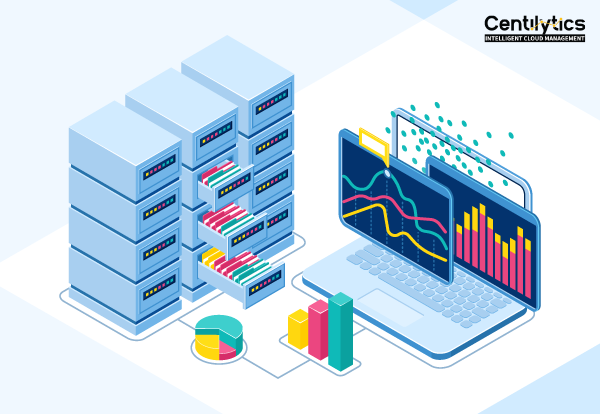Big Data and Analytics as an applied field has existed for a long time now, but it has started hitting the limelight only recently. A simple definition for Big Data and Analytics would be — large amounts of structured, semi-structured, and unstructured data capable of being mined for information. This information is used in advanced analytics applications along with modeling and machine learning. However, Gartner defines it as — “Big data is high-volume, velocity, and variety information assets that demand cost-effective, innovative forms of information processing for enhanced insight and decision making.”
Big Data and Analytics and Cloud Services
Since cloud services have emerged to provide solutions for various walks of life, it is only fair to expect that the combination of Big Data and Analytics and cloud services will yield productive results. The sheer importance of Big Data can be assessed from a study by Forbes that states Americans alone use around 4.41 million GB of internet data per minute with 188 million emails, 18.1 million texts, and 4.49 million Google searches. All institutions, including government, healthcare, businesses, and financial, are reaping the benefits of Big Data. They use it to either provide a better customer experience or enhance their business opportunities.
Big data and cloud services are essentially complementary to each other as conventional data processing methods are not able to process such large amounts of data. Without cloud services, big data is a mere useless data dump that cannot be utilized, and on the other hand, big data empowers the development of several cloud applications. Big data consists of all forms of data, such as data sharing, visualization, analysis, storage, and mining. There are infinite possibilities when big data and cloud services are put together. Cloud services are needed to even gather datasets.
Big Data in Cloud — Present and Future
Cloud computing provides a Pay-as-you-go model that allows users to keep their costs in check while working with big data. Big data provides machine learning and automation vectors that fuel the development of cloud services. The sheer scale of big data makes it impossible to run processes on on-premise solutions, and this is where cloud services come in. Cloud provides multiple features such as streamlined processes, cost-efficient operations, scaling ability, and availability that allow users to work with big data. Big data can only become useful when paired with a cloud service that provides a simple setup process to initiate tasks and organize them in an exact format for users to work with.
Multiple experts believe that the amount of data generated in big data will increase exponentially in the future. Digitization of the World even says this data might reach 90 zettabytes by 2025, whereas IDC forecasts it to reach 175 zettabytes. All this data will be migrated to the cloud due to its sheer size. Some experts even go to the extent of saying that algorithms will replace software in the future. Algorithms will provide businesses the opportunity to add their data and get precise results.
Overview
With the rapid rise of opportunities in the space where big data and cloud services intersect, companies are gearing up to embrace the next wave of change. While full of opportunities, this intersection of big data and cloud services will also come with its own set of challenges. To be precise, optimization challenges because the nature of Big Data and Analytics makes it essential that an organization dealing in Big Data solutions has its cloud well optimized. This is where Centilytics — an intelligent cloud management platform — comes in with its unique cloud optimization solutions that bring up to 75 percent savings on cloud costs. Click here to start your free trial of Centilytics today.

